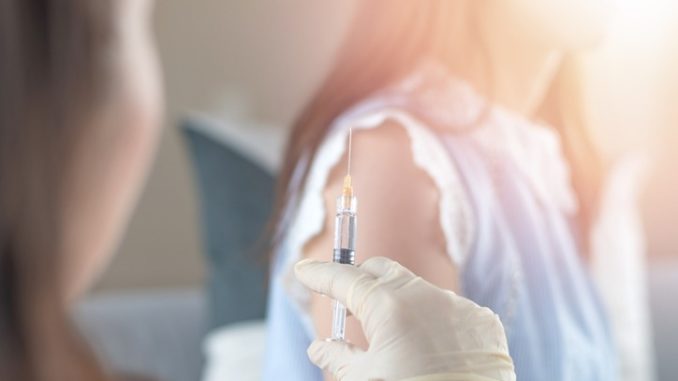
Amid a global shortage of HPV vaccine, more must be done to steer supplies towards those most at risk: girls in poor countries
This is an edited version of an article first published by The Guardian.
For too many women, cervical cancer is a death sentence. But it doesn’t have to be. A life-saving preventative vaccine can dramatically cut cases and put the world on track to eliminate this deadly disease.
The UK first began offering a vaccine against HPV – the primary cause of cervical cancer – in 2008. According to a 2018 study by Public Health England, infections of certain cancer-causing types of HPV have since fallen by 86% among 16- to 21-year-old women. A study conducted in Scotland last year found that the vaccine reduced pre-cancerous cervical lesions by up to 90%.
But such impact has been largely confined to wealthy countries, where the vaccine is widely available. Today, 90% of all cervical cancer deaths around the world occur in developing countries, many of which have yet to introduce inoculation. Just 21 low-income countries have the vaccine.
While demand for the vaccine is high, efforts to roll it out in developing countries have been threatened by a global supply shortage. With limited doses available, millions of women and girls are left without protection against a largely preventable disease, simply because of where they live.
Last summer, the UK announced the expansion of their HPV vaccination programme to include boys. Other countries, including the US, Germany and Australia, have implemented similar policies. The US also recommends the vaccine for certain women up to 45.
Encouraging more people to get vaccinated is unquestionably a positive thing. But, in the context of a global shortage, expanding the population that receives inoculation could mean girls and women in poorer countries are left behind.
It should be noted that vaccinating girls against HPV protects boys too, through herd immunity: when enough girls in a community are protected, the virus can’t spread from person to person and everyone is safeguarded.
The effects of the vaccine shortage are compounded by lack of access to timely screening and treatment options in low- and middle-income countries. Reliable preventive care services to spot cancer early, like pap smears and visual inspection with acetic acid, are often unavailable. This can mean that cancer diagnoses are often made too late, if at all.
Even when cervical cancer is diagnosed, many areas do not have healthcare facilities with cancer specialists, or the equipment for treatments like radiation and chemotherapy. These services are also expensive, putting them out of reach for many. Without access to the HPV vaccine, girls and women in the regions of highest need are left without any tools to protect themselves.
In November, the World Health Organization’s strategic advisory group of immunisation experts recommended that all countries temporarily postpone the implementation of HPV vaccination strategies for boys and older age groups. The expert group also suggested that countries consider adopting a vaccination schedule where the second dose is administered three to five years after the first, as appropriate to the national context. Deferring the second dose for younger girls does not affect the vaccine’s effectiveness and will make more doses available now, when they are urgently needed.
Implementing these recommendations and steering vaccine supply toward countries at high risk could save hundreds of thousands of lives.
The HPV vaccine shortage has an end in sight – new manufacturers are entering the market and more doses will be available eventually, though probably not until 2024 at the earliest. But millions of girls should not have to wait years to receive the life-saving benefits of HPV vaccination.
To create a future where girls and women don’t have to bear the burden of cervical cancer, leaders need to take steps to ensure that the limited doses we have go to the regions where they can save the most lives. Countries must also invest in life-saving services like cervical cancer screening and treatment programmes that can protect women who haven’t received the vaccine.
If we take these actions, we’ll be sending a clear message that the lives of girls and women in poorer countries really are equal to those in rich ones.
Dr Nelly R Mugo is chief research officer and head of the sexual reproductive and adolescent child health research programme at the Kenya Medical Research Institute.
Don’t forget to follow us on Twitter, or connect with us on LinkedIn!

Be the first to comment